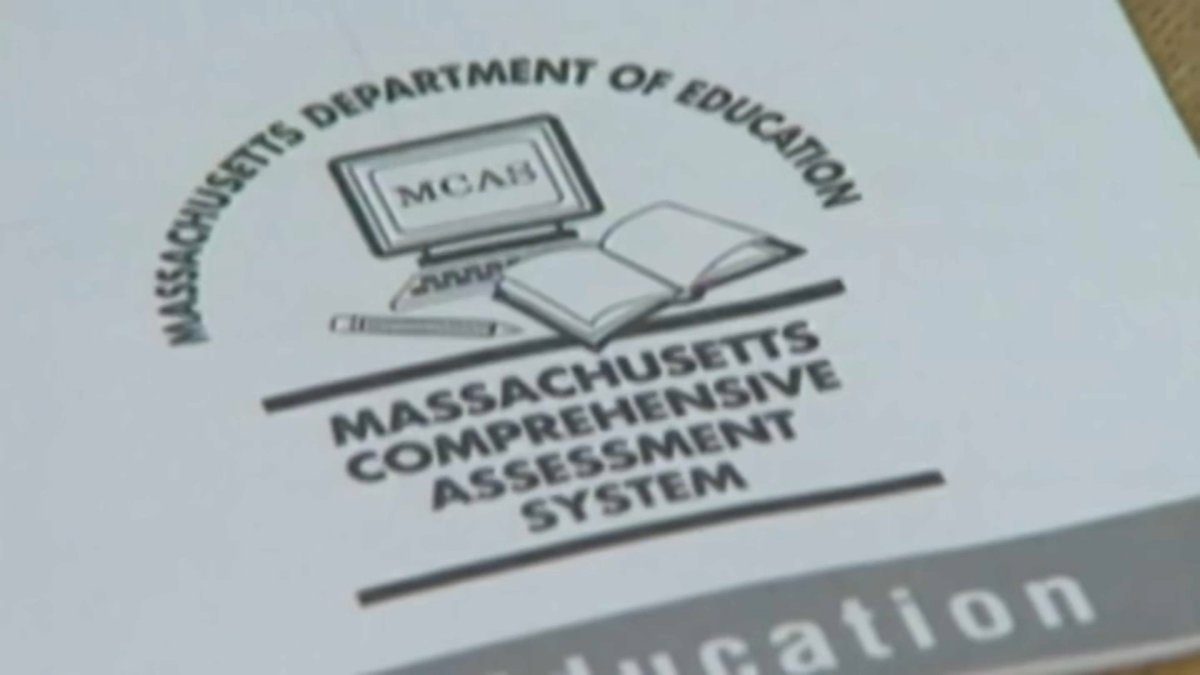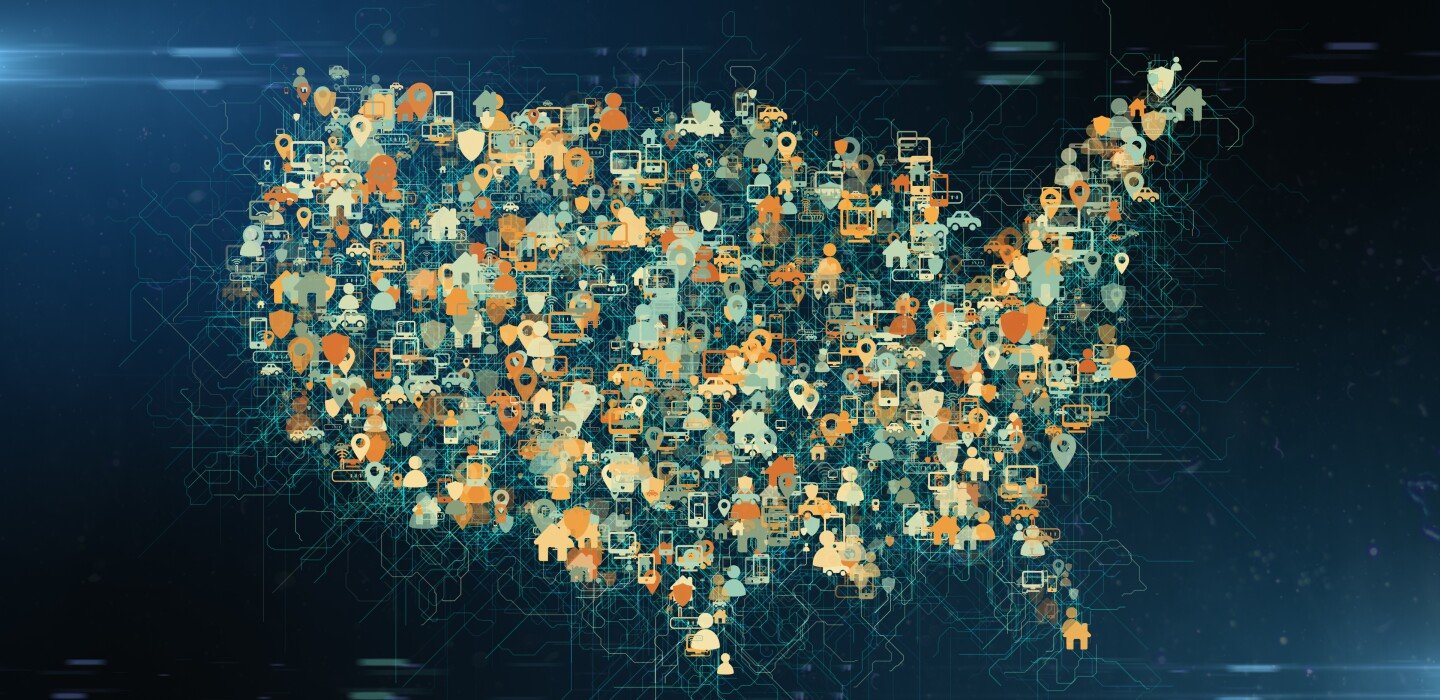AI Research
New MIT Sloan research suggests that AI is more likely to complement, not replace, human workers

CAMBRIDGE, MA, March 17, 2025 — While much public discourse centers on concerns of advanced technologies substituting for and displacing human workers, new research from the MIT Sloan School of Management presents a different perspective — moving beyond simply identifying jobs at risk from AI and highlighting areas where human expertise will remain important and complementary to technological advancements.
The paper, “The EPOCH of AI: Human-Machine Complementarities at Work” offers a framework of human-intensive capabilities and a set of metrics to evaluate tasks across all occupations and better understand the effects of AI on the labor market. Authors are the Society of Sloan Fellows Professor of Management at MIT Sloan, and postdoctoral associate Isabella Loaiza.
“There tends to be a prevailing narrative that robots are coming for jobs,” said Rigobon. “We think it’s important to ask different questions — looking more at human capabilities than AI capabilities and shifting toward what technology can give us rather than what it might take away.”
The researchers studied the statistical limitations of AI tools. AI is based on universal approximation functions and it is known that those tools perform badly when data are biased or small, when extrapolation far from the training data is needed, and when moral dilemmas emerge. From these deficiencies, the authors concentrated on how humans have dealt with these problems, which creates the foundation for skills that are complementary to AI.
The paper evaluates tasks across a variety of occupations using three key metrics: the EPOCH index (encompassing five groups of human capabilities), a risk-of-substitution score, and a potential-for-augmentation score. The acronym EPOCH stands for:
- Empathy and Emotional Intelligence
- Presence, Networking, and Connectedness
- Opinion, Judgment, and Ethics
- Creativity and Imagination
- Hope, Vision, and Leadership.
Each of these categories include uniquely human capabilities that enable humans to do work in areas where machines are limited.
The metrics are used to evaluate how human-intensive a task is, and whether an occupation can likely be automated or augmented by technology. While automation involves a direct transfer of a task from humans to machines, augmentation occurs when using a machine in a task increases worker productivity in that task or other tasks, thus enhancing overall labor productivity. Augmentation, therefore, requires considering the interactions among tasks, whether in pairs, clusters, or networks. Rather than just serving as “partial automation,” augmentation allows humans to do things that they couldn’t do before. For example, the introduction of advanced microscope tools has augmented humans’ ability to work within micro and nano worlds.
“A lot of the research done in this area tends to look more generally at detailed work activities — using scores from there and extrapolating it down,” said Loaiza. “We focused specifically on tasks and, most importantly, the structure of tasks within a job or occupation to measure augmentation.”
The findings suggest that there are many critical human-intensive tasks — tasks that cannot be done effectively entirely by machines — and an increase in the amount of human-intensive tasks, and in the frequency with which workers performed these tasks between 2016 and 2024. In addition, tasks that were newly added to the O*NET data set — one of the largest datasets used to study labor in the United States, maintained by the Bureau of Labor Statistics — in 2024 have higher levels of EPOCH capabilities than the tasks that previously existed (prior to 2024) and the tasks that disappeared in 2024.
Examples of tasks with high EPOCH levels involve direct recruitment, placement, training and evaluation of architecture or engineering project staff. Such tasks include determining scientific or technical goals within broad outlines provided by top management and developing detailed plans to accomplish these goals. Examples of jobs that often include high levels of EPOCH skills, such as creativity or empathy, include emergency management directors, clinical and counseling psychologists, childcare providers, public relations specialists, and film directors.
The research points to the need to invest in the development of workers’ EPOCH capabilities to gain the benefits from helping workers become complementary to — and not replaced by — AI and new technologies.
“We deliberately don’t call these [human skills] ‘soft’ skills,” said Rigobon. “A ‘hard’ skill, like solving a math problem, is comparatively easy to teach. It is much harder to teach a person these critical human skills and capabilities—such as hope, empathy, and creativity.”
About the MIT Sloan School of Management
The MIT Sloan School of Management is where smart, independent leaders come together to solve problems, create new organizations, and improve the world. Learn more at mitsloan.mit.edu.
AI Research
BITSoM launches AI research and innovation lab to shape future leaders

Mumbai: The BITS School of Management (BITSoM), under the aegis of BITS Pilani, a leading private university, will inaugurate its new BITSoM Research in AI and Innovation (BRAIN) Lab in its Kalyan Campus on Friday. The lab is designed to prepare future leaders for workplaces transformed by artificial intelligence, on Friday on its Kalyan campus.
While explaining the concept of the laboratory, professor Saravanan Kesavan, dean of BITSoM, said that the BRAIN Lab had three core pillars–teaching, research, and outreach. Kesavan said, “It provides MBA (masters in business administration) students a dedicated space equipped with high-performance AI computers capable of handling tasks such as computer vision and large-scale data analysis. Students will not only learn about AI concepts in theory but also experiment with real-world applications.” Kesavan added that each graduating student would be expected to develop an AI product as part of their coursework, giving them first-hand experience in innovation and problem-solving.
The BRAIN lab is also designed to be a hub of collaboration where researchers can conduct projects in partnership with various companies and industries, creating a repository of practical AI tools to use. Kesavan said, “The initial focus areas (of the lab) include manufacturing, healthcare, banking and financial services, and Global Capability Centres (subsidiaries of multinational corporations that perform specialised functions).” He added that the case studies and research from the lab will be made freely available to schools, colleges, researchers, and corporate partners, ensuring that the benefits of the lab reach beyond the BITSoM campus.
BITSoM also plans to use the BRAIN Lab as a launchpad for startups. An AI programme will support entrepreneurs in developing solutions as per their needs while connecting them to venture capital networks in India and Silicon Valley. This will give young companies the chance to refine their ideas with guidance from both academics and industry leaders.
The centre’s physical setup resembles a modern computer lab, with dedicated workspaces, collaborative meeting rooms, and brainstorming zones. It has been designed to encourage creativity, allowing students to visualise how AI works, customise tools for different industries, and allow their technical capabilities to translate into business impacts.
In the context of a global workplace that is embracing AI, Kesavan said, “Future leaders need to understand not just how to manage people but also how to manage a workforce that combines humans and AI agents. Our goal is to ensure every student graduating from BITSoM is equipped with the skills to build AI products and apply them effectively in business.”
Kesavan said that advisors from reputed institutions such as Harvard, Johns Hopkins, the University of Chicago, and industry professionals from global companies will provide guidance to students at the lab. Alongside student training, BITSoM also plans to run reskilling programmes for working professionals, extending its impact beyond the campus.
AI Research
AI grading issue affects hundreds of MCAS essays in Mass. – NBC Boston

The use of artificial intelligence to score statewide standardized tests resulted in errors that affected hundreds of exams, the NBC10 Investigators have learned.
The issue with the Massachusetts Comprehensive Assessment System (MCAS) surfaced over the summer, when preliminary results for the exams were distributed to districts.
The state’s testing contractor, Cognia, found roughly 1,400 essays did not receive the correct scores, according to a spokesperson with the Department of Elementary and Secondary Education.
DESE told NBC10 Boston all the essays were rescored, affected districts received notification, and all their data was corrected in August.
So how did humans detect the problem?
We found one example in Lowell. Turns out an alert teacher at Reilly Elementary School was reading through her third-grade students’ essays over the summer. When the instructor looked up the scores some of the students received, something did not add up.
The teacher notified the school principal, who then flagged the issue with district leaders.
“We were on alert that there could be a learning curve with AI,” said Wendy Crocker-Roberge, an assistant superintendent in the Lowell school district.
AI essay scoring works by using human-scored exemplars of what essays at each score point look like, according to DESE.
DESE pointed out the affected exams represent a small percentage of the roughly 750,000 MCAS essays statewide.
The AI tool uses that information to score the essays. In addition, humans give 10% of the AI-scored essays a second read and compare their scores with the AI score to make sure there aren’t discrepancies. AI scoring was used for the same amount of essays in 2025 as in 2024, DESE said.
Crocker-Roberge said she decided to read about 1,000 essays in Lowell, but it was tough to pinpoint the exact reason some students did not receive proper credit.
However, it was clear the AI technology was deducting points without justification. For instance, Crocker-Roberge said she noticed that some essays lost a point when they did not use quotation marks when referencing a passage from the reading excerpt.
“We could not understand why an individual score was scored a zero when it should have gotten six out of seven points,” Crocker-Roberge said. “There just wasn’t any rhyme or reason to that.”
District leaders notified DESE about the problem, which resulted in approximately 1,400 essays being rescored. The state agency says the scoring problem was the result of a “temporary technical issue in the process.”
According to DESE, 145 districts were notified that had at least one student essay that was not scored correctly.
“As one way of checking that MCAS scores are accurate, DESE releases preliminary MCAS results to districts and gives them time to report any issues during a discrepancy period each year,” a DESE spokesperson wrote in a statement.
Mary Tamer, the executive director of MassPotential, an organization that advocates for educational improvement, said there are a lot of positives to using AI and returning scores back to school districts faster so appropriate action can be taken. For instance, test results can help identify a child in need of intervention or highlight a lesson plan for a teacher that did not seem to resonate with students.
“I think there’s a lot of benefits that outweigh the risks,” said Tamer. “But again, no system is perfect and that’s true for AI. The work always has to be doublechecked.”
DESE pointed out the affected exams represent a small percentage of the roughly 750,000 MCAS essays statewide.
However, in districts like Lowell, there are certain schools tracked by DESE to ensure progress is being made and performance standards are met.
That’s why Crocker-Roberge said every score counts.
With MCAS results expected to be released to parents in the coming weeks, the assistant superintendent is encouraging other districts to do a deep dive on their student essays to make sure they don’t notice any scoring discrepancies.
“I think we have to always proceed with caution when we’re introducing new tools and techniques,” Crocker-Roberge said. “Artificial intelligence is just a really new learning curve for everyone, so proceed with caution.”
There’s a new major push for AI training in the Bay State, where educators are getting savvier by the second. NBC10 Boston education reporter Lauren Melendez has the full story.
AI Research
National Research Platform to Democratize AI Computing for Higher Ed

As higher education adapts to artificial intelligence’s impact, colleges and universities face the challenge of affording the computing power necessary to implement AI changes. The National Research Platform (NRP), a federally funded pilot program, is trying to solve that by pooling infrastructure across institutions.
Running large language models or training machine learning systems requires powerful graphics processing units (GPUs) and maintenance by skilled staff, Frank Würthwein, NRP’s executive director and director of the San Diego Supercomputer Center, said. The demand has left institutions either reliant on temporary donations and collaborations with tech companies, or unable to participate at all.
“The moment Google no longer gives it for free, they’re basically stuck,” Würthwein said.
Cloud services like Amazon Web Services and Azure offer these tools, he said, but at a price not every school can afford.
Traditionally, universities have tried to own their own research computing resources, like the supercomputer center at the University of California, San Diego (UCSD). But individual universities are not large enough to make the cost of obtaining and maintaining those resources cost-effective.
“Almost nobody has the scale to amortize the staff appropriately,” he said.
Even UCSD has struggled to keep its campus cluster affordable. For Würthwein, scaling up is the answer.
“If I serve a million students, I can provide [AI] services for no more than $10 a year per student,” he said. “To me, that’s free, because if you think about in San Diego, $10 is about a beer.”
A NATIONAL APPROACH
NRP adds another option for acquiring AI computing resources through cross-institutional pooling. Built on the earlier Pacific Research Platform, the NRP organizes a distributed computing system called the Nautilus Hypercluster, in which participating institutions contribute access to servers and GPUs they already own.
Würthwein said that while not every college has spare high-end hardware, many research institutions do, and even smaller campuses often have at least a few machines purchased through grants. These can be federated into NRP’s pool, with NRP providing system management, training and support. He said NRP employs a small, skilled staff that automates basic operations, monitors security and provides example curricula to partner institutions so that campuses don’t need local teams for those tasks.
The result is a distributed cloud supercomputer running on community contributions. According to a March 2025 slide presentation by Seungmin Kim, a researcher from the Yonsei University College of Medicine in Korea, the cluster now includes more than 1,400 GPUs, quadruple the initial National Science Foundation-funded purchase, thanks to contributions from participating campuses.
Since the project’s official launch in March 2023, NRP has onboarded more than 50 colleges and 84 geographic sites, according to Würthwein. NRP’s pilot goal is to reach 100 institutions, but he is already planning for 1,000 colleges after that, which would provide AI access to 1 million students.
To reach these goals, Würthwein said, NRP tries to reach both IT staff who manage infrastructure and faculty who manage curriculum. Regional research and education networks, such as California’s CENIC, connect NRP with campus CIOs, while the Academic Data Science Alliance connects with leaders on the teaching side.
WHAT STUDENTS AND FACULTY SEE
From the user side, the system looks like a one-stop cloud environment. Platforms like JupyterHub and GitLab are preconfigured and ready to use. The platform also hosts collaboration tools for storage, chats and video meetings that are similar to commercial offerings.
Würthwein said the infrastructure is designed so students can log in and run assignments and personalized learning tools that would normally require expensive computing resources.
“At some point … education will be considered subpar if it doesn’t provide that,” he said. “Institutions who have not transitioned to provide education like this, in this individualized fashion for every student, will fundamentally offer a worse product.”
For faculty, the same infrastructure supports research. Classroom usage tends to leave servers idle outside of peak times, leaving capacity for faculty projects. NRP’s model expects institutions to own enough resources to cover classroom needs, but anything unused can be pooled nationally. This could allow even teaching-focused colleges with modest resources to offer AI research experiences previously out of reach.
According to Kim’s presentation, researchers have used the platform to predict the efficiency of gene editing without lab experimentation and to map and detect wildfire patterns.
The system has already enabled collaboration beyond its San Diego campus. At Sonoma State University, faculty are working with a local vineyard to pair the system with drones, robotics and AI to enable vineyard management, Würthwein said. Making AI for classroom applications, enhancing research and enabling industry collaboration at more higher-education institutions is the overall goal.
“To me, that is the perfect trifecta of positive effects,” he said. “This is ultimately what we’re trying to achieve.”
-

 Business2 weeks ago
Business2 weeks agoThe Guardian view on Trump and the Fed: independence is no substitute for accountability | Editorial
-
Tools & Platforms1 month ago
Building Trust in Military AI Starts with Opening the Black Box – War on the Rocks
-

 Ethics & Policy2 months ago
Ethics & Policy2 months agoSDAIA Supports Saudi Arabia’s Leadership in Shaping Global AI Ethics, Policy, and Research – وكالة الأنباء السعودية
-

 Events & Conferences4 months ago
Events & Conferences4 months agoJourney to 1000 models: Scaling Instagram’s recommendation system
-

 Jobs & Careers2 months ago
Jobs & Careers2 months agoMumbai-based Perplexity Alternative Has 60k+ Users Without Funding
-

 Podcasts & Talks2 months ago
Podcasts & Talks2 months agoHappy 4th of July! 🎆 Made with Veo 3 in Gemini
-

 Education2 months ago
Education2 months agoVEX Robotics launches AI-powered classroom robotics system
-

 Education2 months ago
Education2 months agoMacron says UK and France have duty to tackle illegal migration ‘with humanity, solidarity and firmness’ – UK politics live | Politics
-

 Funding & Business2 months ago
Funding & Business2 months agoKayak and Expedia race to build AI travel agents that turn social posts into itineraries
-

 Podcasts & Talks2 months ago
Podcasts & Talks2 months agoOpenAI 🤝 @teamganassi

